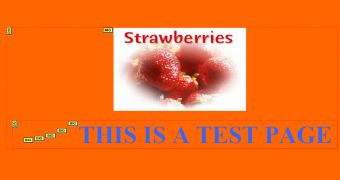WYSIWYG (What You See Is What You Get) HTML Editors allow you to create websites or edit HTML templates using visual elements, as you are editing a document in Microsoft Word application for example. These WYSIWYG editors can be used on your computer desktop, as server side or as client side standalone applications.
They have many advantages, such as the automatic generation of HTML code, automatic CSS and HTML validation and more. But in the same time, WYSIWYG HTML Editors can introduce various unnecessary HTML codes or even errors sometimes (very rarely).
KompoZer is a very easy to use WYSIWYG HTML editor providing many features common to Microsoft FontPage and Adobe Dreamweaver, but with simplified implementation. If you create a simple web page in which you insert an image and some text for example, by switching to source code view, you will notice the presence of an unneeded META tag
[CODE=0][CODE=1]
which is not necessary in case you need the default encoding character set which in this case is ISO-8859-1. In the presence of this META tag, some browsers could show various page rendering issues.
Another common problem met in case of many WYSIWYG HTML Editors is the excessive generation of non-breaking spaces which will determine a larger HTML document size, increasing the loading time value. KompoZer, as well as other HTML editors has built in optimization and validation tools, which will partially solve the problems induced by the presence of unneeded HTML code. I recommend the usage of different validation and optimization tools, because their cumulated actions will clean the code deeply and the resulting file will be ready for optimal web usage.

 14 DAY TRIAL //
14 DAY TRIAL //